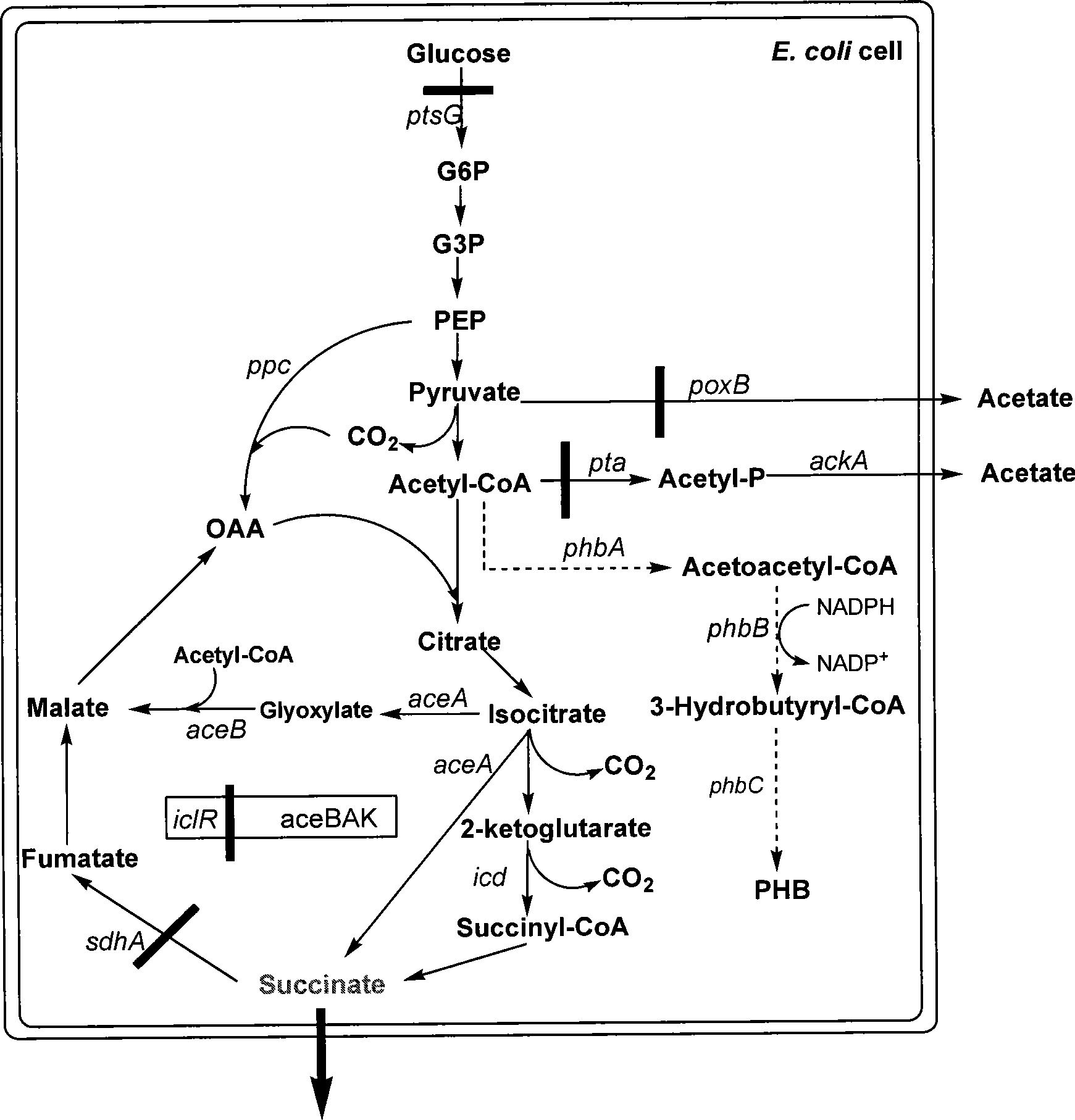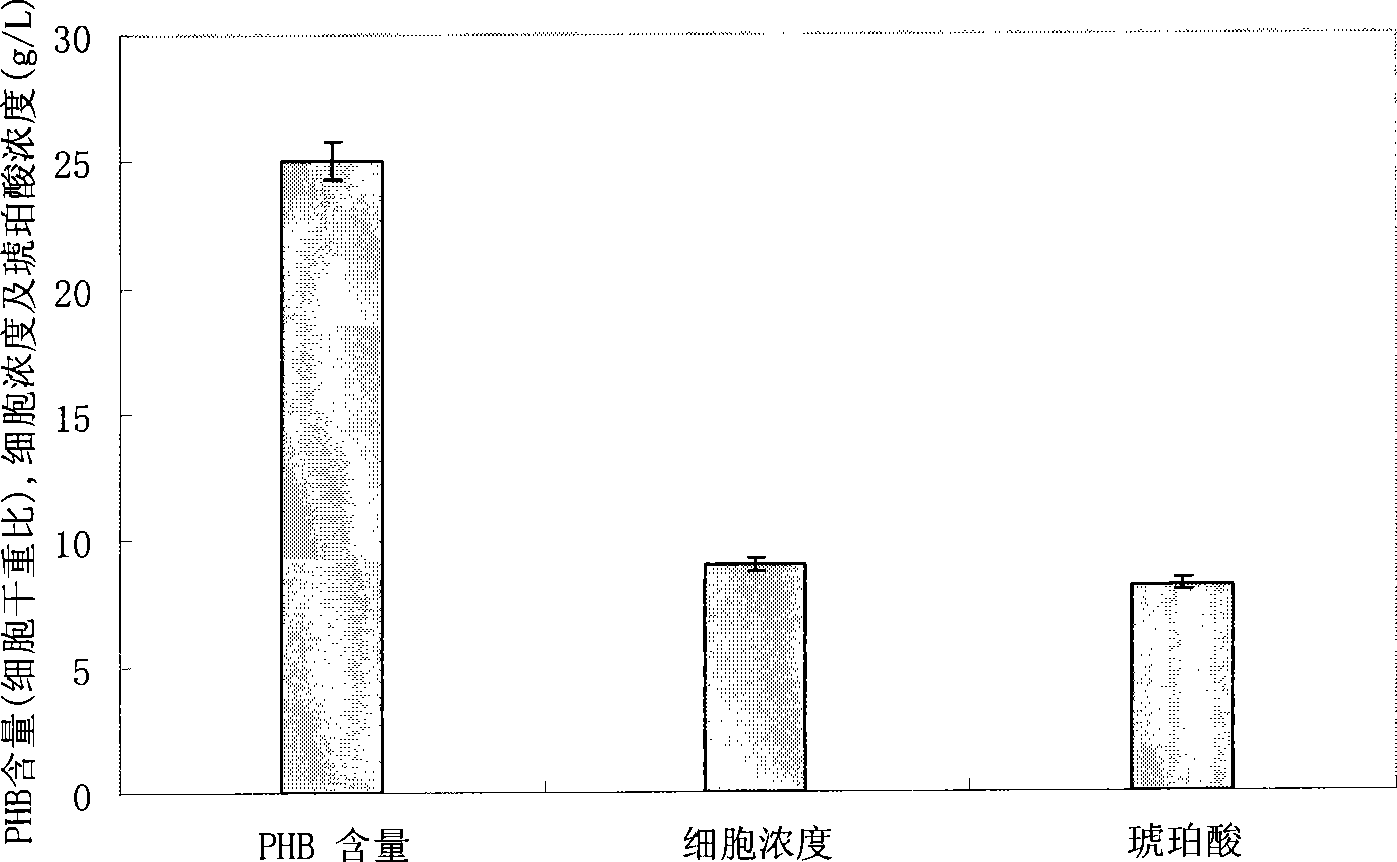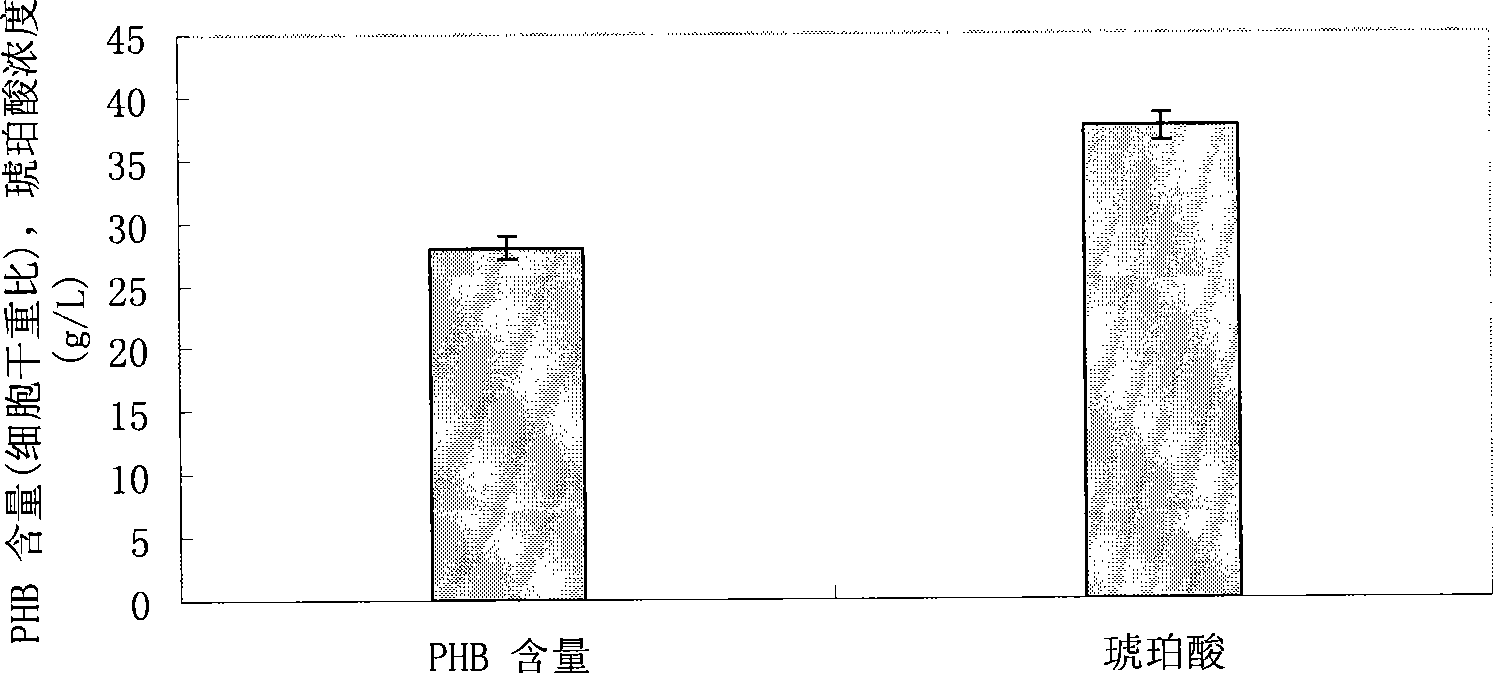Method for coproducing succinic acid and poly beta-hydroxybutyrate using recombination of escherichia coli
A technology for recombining Escherichia coli and hydroxybutyrate, applied in the field of genetic engineering and microbial fermentation, can solve the problem of high cost of PHB
- Summary
- Abstract
- Description
- Claims
- Application Information
AI Technical Summary
Problems solved by technology
Method used
Image
Examples
Embodiment 1
[0063] Embodiment 1, construction of succinic acid fermentation pathway (knockout sdhAB)
[0064] Bacteria: Escherichia coli MG1655
[0065] The LB medium is: peptone 10g / L, yeast powder 5g / L, NaCl 10g / L, ampicillin 100mg / L, kanamycin 50mg / L.
[0066] The ampicillin-resistant plate is an LB solid medium containing 100 mg / L ampicillin and 1.5% agar powder.
[0067] The kanamycin-resistant plate is an LB solid medium containing 50 mg / L ampicillin and 1.5% agar powder.
[0068] The SOC medium is: peptone 2g / L, yeast powder 0.5g / L, NaCl 0.0585g / L, KCl 0.0186g / L, MgCl 2 0.203g, MgSO 4 0.246g / L, glucose 20mmol / L.
[0069] (1) Cloning of homologous recombination fragments
[0070] The gene of interest was knocked out using the Red recombination system. Primers were designed according to the sdhAB gene sequence published by Genbank:
[0071] pKD-sdhAB primer1
[0072] 5′-GGGCCACACGCGAAACTGAAACTCGATCACCTGGGTAAAGTGTAGGCTGGAGCTGCTTC-3′
[0073] pKD-sdhAB primer2
[0074] 5′-G...
Embodiment 2
[0097] Embodiment 2, the construction of PHB synthetic metabolic pathway
[0098] Bacteria: Escherichia coli DH5α
[0099] The medium LB: peptone 10g / L, yeast powder 5g / L, NaCl 10g / L, ampicillin, 100mg / L.
[0100] The PHB synthetase gene is derived from Alcaligenes eutrophus (A.eutrophus).
[0101] The ampicillin-resistant plates contained 1.5% agar and 100 mg / L ampicillin.
[0102] (1) Construction of PHB synthetase expression vector
[0103] (1) Alcaligenes eutropha was inoculated in LB medium, and the genome was extracted using a universal bacterial genome extraction kit.
[0104] (II) According to the genome sequence of Alcaligenes eutropha published by Genbank, design primers:
[0105] phbCAB primer 1: 5′-ATCCCCGGGGCGACCGGCAAAGGCGCGGCAGCTTCCA-3′
[0106] phbCAB primer 2: 5′-ATGGAATTCCAGCCCATATGCAGGCCGCCGTTGAGC-3′
[0107] (II) Cloning of PHB synthase gene
[0108] Using the genome of Alcaligenes eutropha as a template, the phbCAB gene was amplified by PCR. PCR rea...
Embodiment 3
[0128] Example 3, Construction of recombinant Escherichia coli co-producing fermentative succinic acid and PHB
[0129] 1. Construction of succinate synthesis pathway (knockout of iclR gene):
[0130] Bacteria: Escherichia coli MG1655△sdhAB
[0131] (I) Cloning of homologous recombination fragments
[0132] Primers were designed according to the Escherichia coli genome sequence published by GenBank
[0133] pKD-iclR primer1:
[0134] 5′-ATGAAAATGATTTCCACGATACAGAAAAAAGACTGTCGTGTAGGCTGGAGCTGCTTC-3′
[0135] pKD-iclR primer2:
[0136] 5′-TATGATGGGCAGAATATTGCCTCTGCCCGCCAGAAAAAGATGGGAATTAGCCATGGTCC-3′, the recombinant fragment with kanamycin resistance was amplified in vitro by PCR (polymerase chain reaction) using pKD4 plasmid as a template. PCR reaction system is as follows: (primer concentration is 20 μ mol / L)
[0137] 5 μl of 10× buffer;
[0138] 25mmol / LMgCl2 4μl;
[0139] 1μl of 10mmol / L four kinds of dNTP mixture;
[0140] 1 μl each of upstream and downstream primer...
PUM
 Login to View More
Login to View More Abstract
Description
Claims
Application Information
 Login to View More
Login to View More - R&D
- Intellectual Property
- Life Sciences
- Materials
- Tech Scout
- Unparalleled Data Quality
- Higher Quality Content
- 60% Fewer Hallucinations
Browse by: Latest US Patents, China's latest patents, Technical Efficacy Thesaurus, Application Domain, Technology Topic, Popular Technical Reports.
© 2025 PatSnap. All rights reserved.Legal|Privacy policy|Modern Slavery Act Transparency Statement|Sitemap|About US| Contact US: help@patsnap.com



